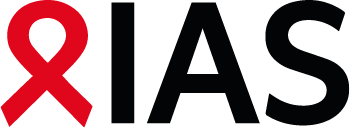Share Abstract
Evaluation of glomerular filtration rate (GFR) in naïve HIV positive patients
Abstract Content:
Objectives: HIV-related renal failure is becoming a frequent clinical entity in HIV positive patients. Our study aims to identify predictive factors of renal impairment in a cohort of HIV-infected naïve patients.
Methods: HIV-infected naïve patients enrolled in I.Co.N.A. with at least 2 serum pre-therapy creatinine available were included. Logistic regression was used to determine the predictors of low GFR (defined as 1st of 2 consecutive values of GFR <90 mL/min per 1,73 m2) according to demographics, viro-immunologic parameters, diabetes and/or hypertension.
Results: Low GFR was found in 300/1193 (25%) subjects. Compared to patients with normal GFR, patients with low GFR were older (median 37 vs 35 years; p<0.0001), more frequently females (41.3 vs 27.1%; p=0.004) and more likely to have diabetes and/or hypertension (6.6 vs 2.5%; p= 0.001). CD4 nadir (459 vs 436 cell/mL; p= 0.15) and VL (3.9 vs 3.9 Log10 cp/mL; p=0.5) were comparable between patients with low GFR and normal GFR.
Predictors of low GFR were female sex (AOR 2.0 vs male, 95%CI 1.5-2.8) and age (AOR 1.5, 95%CI 1.3-1.8 per 10 years older). Patients with diabetes and/or hypertension had higher risk of low GFR (AOR 2.2 vs healthy, 95%CI 1.1-4.3). CD4 nadir and current viral load were not associated with low GFR.
Conclusions: Our results showed that a GFR impair is frequent in HIV-infected patients even in the absence of antiretroviral therapy; in our cohort the role played by the traditional risk factors for renal impairment such as age, diabetes and hypertension seems to overtake the role played by HIV-related viro-immunological parameters. A further follow-up of patients with low GFR will be important to assess the prognostic role of GFR alteration in HIV infection.
Methods: HIV-infected naïve patients enrolled in I.Co.N.A. with at least 2 serum pre-therapy creatinine available were included. Logistic regression was used to determine the predictors of low GFR (defined as 1st of 2 consecutive values of GFR <90 mL/min per 1,73 m2) according to demographics, viro-immunologic parameters, diabetes and/or hypertension.
Results: Low GFR was found in 300/1193 (25%) subjects. Compared to patients with normal GFR, patients with low GFR were older (median 37 vs 35 years; p<0.0001), more frequently females (41.3 vs 27.1%; p=0.004) and more likely to have diabetes and/or hypertension (6.6 vs 2.5%; p= 0.001). CD4 nadir (459 vs 436 cell/mL; p= 0.15) and VL (3.9 vs 3.9 Log10 cp/mL; p=0.5) were comparable between patients with low GFR and normal GFR.
Predictors of low GFR were female sex (AOR 2.0 vs male, 95%CI 1.5-2.8) and age (AOR 1.5, 95%CI 1.3-1.8 per 10 years older). Patients with diabetes and/or hypertension had higher risk of low GFR (AOR 2.2 vs healthy, 95%CI 1.1-4.3). CD4 nadir and current viral load were not associated with low GFR.
Conclusions: Our results showed that a GFR impair is frequent in HIV-infected patients even in the absence of antiretroviral therapy; in our cohort the role played by the traditional risk factors for renal impairment such as age, diabetes and hypertension seems to overtake the role played by HIV-related viro-immunological parameters. A further follow-up of patients with low GFR will be important to assess the prognostic role of GFR alteration in HIV infection.
